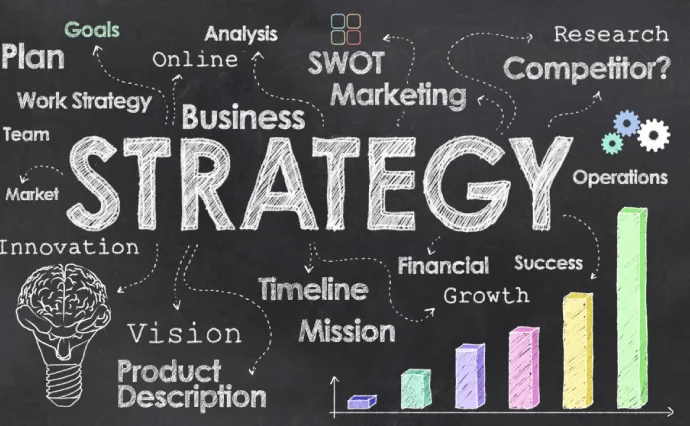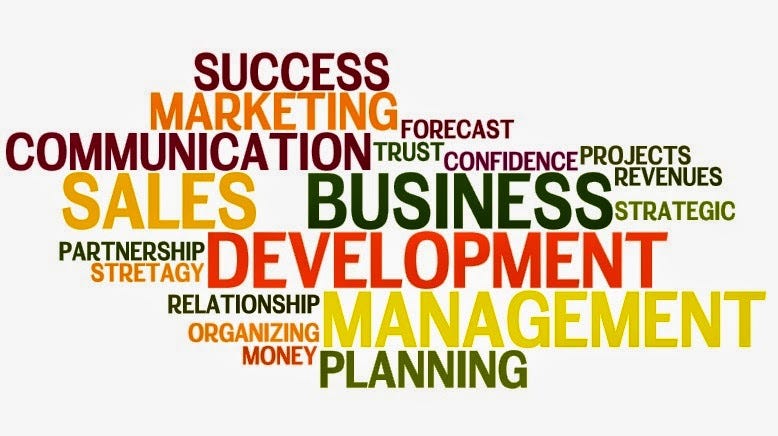Mastering the art of business leadership is crucial in today’s competitive and ever-evolving marketplace. Effective leadership goes beyond traditional management skills and involves a deep understanding of organizational dynamics, strategic vision, and the ability to inspire and guide teams towards achieving common goals. In an era characterized by rapid technological advancements and shifting market conditions, leaders must not only manage day-to-day operations but also anticipate future trends and navigate through complex challenges. This dynamic role requires a blend of strategic foresight, emotional intelligence, and adaptability, making the pursuit of business leadership excellence both a challenging and rewarding endeavor.
Foundations of a Successful Business
1. Comprehensive Market Research
Successful businesses start with a deep understanding of their market. Comprehensive market research provides insights into consumer preferences, competitor strategies, and industry trends. Tools like surveys, focus groups, and analytics help gather data that informs product development and marketing. By staying attuned to market demands, companies can better align their offerings with customer needs.

2. Strategic Business Planning
A solid business plan is the cornerstone of success. It outlines a company’s vision, mission, objectives, and the strategies to achieve them. Key elements include market analysis, organizational structure, and financial forecasts. A well-crafted plan serves as a roadmap for growth, guiding decision-making and attracting investors. Regularly revisiting and updating the plan ensures the business remains responsive to market changes.
Understanding Market Trends
Current Trends Shaping the Business World
Keeping abreast of market trends is essential for staying relevant. Trends such as remote work, e-commerce growth, and sustainability are influencing how businesses operate. For example, the rise of e-commerce has led to the increased use of digital marketing strategies, while sustainability concerns are pushing companies toward eco-friendly practice
3. Effective Financial Management
Effective financial management is critical for sustaining and growing a business. It involves budgeting, forecasting, and managing cash flow. Companies must also implement risk management strategies to mitigate financial uncertainties. Sound financial practices enable businesses to allocate resources wisely, pursue growth opportunities, and maintain financial stability.
Innovative Strategies for Modern Businesses
1. Embracing Digital Transformation
In the digital era, technology is a key driver of business success. Digital transformation involves integrating digital technologies into all areas of a business, fundamentally changing how it operates and delivers value to customers. This includes using customer relationship management (CRM) systems, e-commerce platforms, and digital marketing strategies like SEO and social media. These tools enhance customer engagement, streamline processes, and expand market reach.
2. Diversification and Market Expansion
Diversification involves introducing new products or services to reach different customer segments or markets. Market expansion focuses on entering new geographic areas or demographics. Both strategies can increase a company’s market share and revenue streams, providing a buffer against market volatility.
Understanding and Adapting to Market Trends
1. Navigating Shifts in Consumer Behavior
Consumer behavior is continually evolving, influenced by technological advances and social trends. To stay relevant, businesses must adapt to these shifts. The rise of e-commerce and mobile shopping has transformed purchasing patterns, making a robust online presence essential. Additionally, there’s a growing demand for sustainable and ethically produced products. Businesses that align with these values can attract and retain conscious consumers.
2. Monitoring Economic Indicators
Economic indicators, such as inflation rates, GDP growth, and consumer confidence, play a significant role in shaping market conditions. By closely monitoring these indicators, businesses can anticipate economic trends and adjust their strategies accordingly. For example, during economic downturns, companies may focus on cost-efficiency and maintaining core operations, while in periods of growth, they might invest in innovation and expansion.
Challenges and Opportunities in the Modern Business World
1. Standing Out in Competitive Markets
In today’s crowded marketplaces, differentiation is key. Businesses must offer unique value propositions; for instance, this can be achieved through innovative products, exceptional customer service, or a distinctive brand voice. Understanding competitors and market dynamics is crucial for identifying opportunities and threats. Staying agile and continuously innovating helps businesses maintain a competitive edge.
2. Managing Financial Risks
Mastering the Art of financial risk management is essential for safeguarding a company’s assets and ensuring long-term stability. This involves strategies like diversifying investments, maintaining a healthy cash reserve, and managing liabilities. Proper risk management allows businesses to navigate economic uncertainties and capitalize on growth opportunities.
Mastering the Art of managing financial risks is a critical aspect of ensuring the stability and longevity of any organization. In today’s complex economic environment, financial risks come in many forms, including market risk, credit risk, liquidity risk, and operational risk. Effective management of these risks involves a comprehensive approach that includes identifying potential threats, assessing their impact, and implementing strategies to mitigate their effects.
Future Trends and Outlook
1. Leveraging Emerging Technologies
Emerging technologies such as artificial intelligence (AI), blockchain, and the Internet of Things (IoT) are revolutionizing various industries. AI can enhance customer service through automation and data-driven insights, while blockchain offers secure and transparent transaction solutions. IoT enables real-time monitoring and data collection, providing valuable information for optimizing operations. Businesses that leverage these technologies can drive innovation and maintain a competitive edge.
2. Committing to Sustainable Practices
Sustainability is becoming a critical focus for businesses across all sectors. Consumers and stakeholders increasingly demand transparency and responsibility in corporate practices. Companies can prioritize sustainability by reducing their carbon footprint, sourcing ethically, and promoting eco-friendly products. Adopting sustainable practices not only benefits the environment but also strengthens brand reputation and loyalty.
Real-World Examples of Business Excellence
Highlighting Successful Companies
Examining companies that have excelled through innovation and strategic planning provides valuable insights. For instance, Tesla’s disruption of the automotive industry through electric vehicles and autonomous driving technology showcases how bold innovation can redefine an industry.
Lessons Learned from Business Success Stories
Analyzing success stories helps identify best practices and strategies that can be applied to other businesses. Key takeaways include the importance of adapting to technological advancements, understanding market demands, and investing in continuous improvement.
Frequently Asked Questions (FAQs)
Q: What are the essential steps for launching a successful business?
Launching a successful business involves identifying a viable business idea, conducting market research, creating a comprehensive business plan, securing funding, and choosing the appropriate business structure. Additionally, businesses must register legally, obtain necessary licenses, and develop a marketing strategy.
Q: How can companies maintain a competitive edge in a crowded market?
To stay competitive, companies should focus on differentiation through unique products, exceptional customer service, and a strong brand identity. Staying informed about market trends, investing in innovation, and leveraging technology are also crucial strategies.
Q:Why is digital transformation critical for businesses today?
Digital transformation is vital for businesses to remain competitive and meet evolving consumer expectations. It involves the integration of digital technologies into all aspects of a business, enhancing efficiency, customer engagement, and market reach.
Q: What role does financial management play in business success?
Financial management is crucial for ensuring a company’s financial health. It involves budgeting, forecasting, and managing cash flow, as well as mitigating financial risks. Effective financial management enables businesses to make informed decisions and pursue growth opportunities.
Q: How can businesses leverage emerging technologies?
Businesses can leverage emerging technologies like AI, blockchain, and IoT to improve efficiency, enhance customer experiences, and drive innovation. These technologies offer new ways to collect and analyze data, secure transactions, and automate processes, providing a competitive advantage.
Q:What are the key qualities that define an effective business leader?
An effective business leader typically exhibits qualities such as strategic vision, emotional intelligence, adaptability, and strong communication skills. They are adept at setting clear objectives, inspiring and motivating their teams, and making informed decisions that align with the organization’s goals. Additionally, they demonstrate resilience and the ability to navigate complex challenges while fostering a collaborative and innovative work environment.
Q:How can leaders foster innovation and adaptability within their teams?
Leaders can foster innovation and adaptability by creating a supportive environment that encourages creative thinking and experimentation. This involves providing team members with the freedom to explore new ideas, offering resources and training to develop new skills, and recognizing and rewarding innovative contributions. Additionally, leaders should promote a culture of open communication and feedback, where employees feel comfortable sharing their ideas and perspectives. Moreover, they should be willing to adapt their strategies based on new insights and evolving market conditions.
conclusion
In conclusion, Mastering the Art of leadership is crucial for achieving long-term success in today’s dynamic business environment. By focusing on innovation, strategic planning, and adaptability, leaders can effectively guide their teams and organizations toward their goals. Embracing these principles not only enhances performance and productivity but also ensures that businesses remain competitive and resilient in the face of ongoing changes. Ultimately, Mastering the Art empowers leaders to drive sustainable growth and navigate the complexities of the modern business world with confidence.


